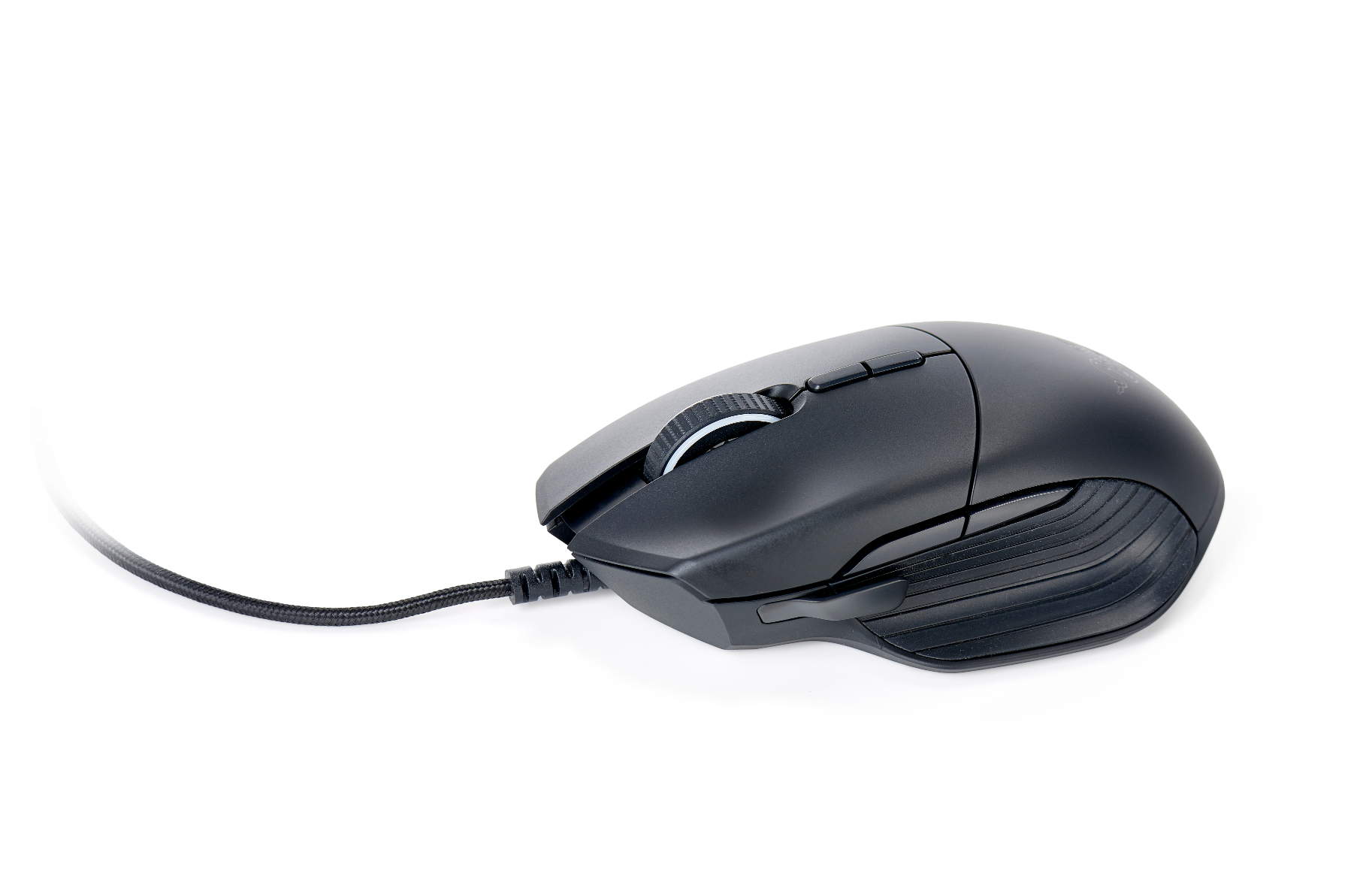Our Verdict
However advanced this Basilisk may or may not be, it’s a pleasure to take with you into an FPS.
For
- Comfortable
- Feature-laden
Against
- Software hoop-jumping
PC Gamer's got your back
Price: $70
Sensor Type: Razer 5G optical
Sensitivity: 16,000 dpi
Sensor: Pixart PMW3588
Polling Rate: 1,000Hz
Programmable Buttons: 8
LEDs: Customizable RGB
Cable length: 7 feet
Weight: 3.8oz
If you believe the marketing hype, this is the world’s most advanced FPS gaming mouse. It probably says a lot about the level at which we play FPS games that we struggle to imagine how peripheral advancements might meaningfully enrich the experience, but Razer’s armed its latest Basilisk with an arsenal of impressive specs to make that argument paramount. This $70 mouse has a max sensitivity of 16,000 DPI, a removable clutch tucked under the LMB to bring that DPI right down for precise aiming, customizable RGB lighting (of course), and even a scroll wheel tension adjustment. Crucially, it doesn’t feel over-designed.
If gaming mice are guilty of anything, it’s that. Entire keyboards nuzzled away by the thumb rest. On-the-fly dimension adjustments. Teeny-weeny weights that spill over your desk, and make family members suspect you’re a drug dealer. Mice simply don’t need a lot going on in order to function well, so congratulations to Razer for keeping the appearance and operation of the Basilisk nice and simple.
This isn’t an ambidextrous model, so assuming you’re a righty, it’s a particularly comfortable mouse for palm grip, and perfectly acceptable for the claw, too. Those who like to float around by fingertip grip might find the thumb rest a little awkward, though. We’re not enamored with the rubberized finish on the sides of this model, and already a disconcerting buildup of hand scum is starting to accumulate in the grooves there. Perhaps keeping the build materials uniform across the chassis might have made for a cleaner and more aesthetically pleasing Basilisk.
Still, any points lost due to those rubber sides are gained right back by the adjustable scroll wheel tension. It sounds like a little, incidental detail. All right, it absolutely is that. But if you’re playing awkward games like My Summer Car, in which screwing in bolts using the mouse wheel constitutes a large part of the experience, having a fast-scrolling rodent is a boon. Simply adjust a secret, extra wheel on the underside of your mouse to adjust to taste. Even at minimum tension, it doesn’t free-wheel like a Logitech mouse, however, which is a bit disappointing—just a note for the wheel aficionados.
A word on the clutch: It’s smart and comfortable, and it works well. It’s held in place magnetically, so you can pop it out and give your thumb more room if you find you’re not using it. A well-executed bit of design from the Xbox One Elite controller playbook.
On the dot
Style and design aren't the only factors when choosing the best gaming mouse for you. In terms of performance and accuracy, this has one of the smoothest and most reliable trackers we’ve tested, and, as such, it is indeed ideal for FPS use. We’re not sure how many people will use that insane 16,000 DPI setting in-game, but we’re guessing we’ll be able to discern them from the crowd by the fact they’re spinning like a gyroscope at all times. DPI can be adjusted in a snap using the two buttons south of the mouse wheel, and as you’d expect, you can adjust the five different gradients using Razer’s own software.
Right, yes. The software. This won’t be the first or the last time Razer is chastised for this, but submitting an email address in order to create a Razer account just so you can change the color scheme of your mouse isn’t acceptable. Stop doing this. Corsair doesn’t do it. SteelSeries doesn’t do it. Stop it, OK? OK. Except for that issue, the Synapse software does everything it needs to—DPI gradient adjustment, polling rate, RGB profiles, and even custom calibration for use on Razer’s various mouse mats and pads. You can save profiles in the software, and later switch between them using—once again—a button on the underside of the Basilisk. It’s not as handy as having a button somewhere under your grip, but better that than accidentally pressing it all the time mid-game, eh?
That’s a lot of nice, thoughtful features for $70, and only Razer’s software signup demands diminish that otherwise generous package. However advanced this Basilisk may or may not be, it’s a pleasure to take with you into an FPS.
This article was originally published in Maximum PC issue 149. For more quality articles about all things PC hardware, you can subscribe to Maximum PC now.
However advanced this Basilisk may or may not be, it’s a pleasure to take with you into an FPS.
Phil 'the face' Iwaniuk used to work in magazines. Now he wanders the earth, stopping passers-by to tell them about PC games he remembers from 1998 until their polite smiles turn cold. He also makes ads. Veteran hardware smasher and game botherer of PC Format, Official PlayStation Magazine, PCGamesN, Guardian, Eurogamer, IGN, VG247, and What Gramophone? He won an award once, but he doesn't like to go on about it.
You can get rid of 'the face' bit if you like.
No -Ed.



